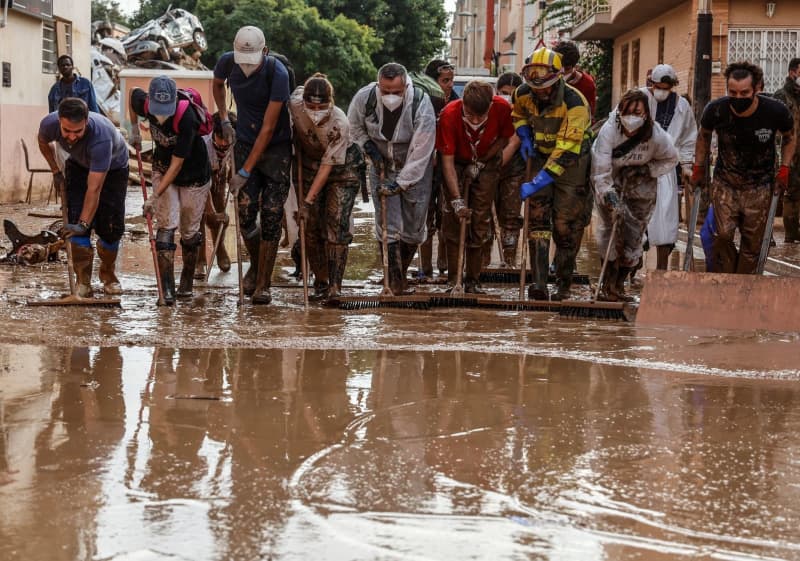Parts of Spain’s Valencia region are gradually returning to normal after suffering from devastating heavy rains and severe flooding nearly two weeks ago. Recent reports indicate that 47 schools have reopened, signaling a step towards recovery, as confirmed by the regional government on the social media platform X. The catastrophic events have resulted in a tragic loss of life, with authorities reporting a death toll exceeding 220 individuals and 32 others still unaccounted for. This ongoing search and recovery effort highlights the large scale of the disaster as it continues to unfold.
In the wake of the flooding, rescue and cleanup operations are progressing across the worst-affected 80 municipalities surrounding Valencia, involving around 20,000 police personnel, military troops, and dedicated volunteers. These teams are working tirelessly to restore order and aid those impacted by the disaster. Particularly in the Albufera de Valencia wetlands, efforts to find victims are ongoing, with the utilization of advanced tools such as drones and echo-sounding equipment. The state broadcaster RTVE has been providing updates on the harrowing conditions faced by the rescue workers.
Despite these recovery initiatives, the weather service AEMET has forecasted further precipitation for the Valencia region. The situation is likely to worsen, with predictions of heavy rainfall extending into neighboring areas, including Catalonia, especially around Barcelona, as well as the Balearic Islands. This weather phenomenon, known as a “cold drop,” is anticipated to further complicate recovery efforts as the region braces for additional storms, exacerbating an already challenging situation for those working on the ground.
The cold drop event that struck the Valencia region on October 29 is a weather pattern that typically occurs during September and October. It is characterized by significant temperature disparities between the sea and air. This meteorological occurrence is triggered when low-pressure systems moving from the Atlantic, carrying cold air, interact with the warmer Mediterranean waters. This climatic event has been especially deadly, claiming the lives of 214 individuals in Valencia and another eight in Castilla-La Mancha and Andalusia, underscoring the severe impact of such weather phenomena.
Local communities, facing unimaginable devastation, are gathering together to assist with the cleanup efforts. In Masanasa, for instance, volunteers are actively working to clear flooded streets and restore essential services. These grassroots efforts demonstrate the resilience and solidarity of the residents as they band together, forging a path toward recovery in the aftermath of widespread destruction. The commitment of these volunteers illustrates the human spirit’s capacity to endure, even in the direst circumstances.
As recovery continues, regional officials emphasize the necessity of preparedness for future storms. They are advocating for improved infrastructure and emergency response mechanisms to mitigate the impact of similar weather events in the future. The Valencia region’s struggles shine a light on the broader challenges posed by climate change, which may lead to more frequent and intense weather events. Awareness and proactive measures could be vital in protecting communities and saving lives in the face of changing environmental conditions as the region seeks to rebuild and secure its future.

